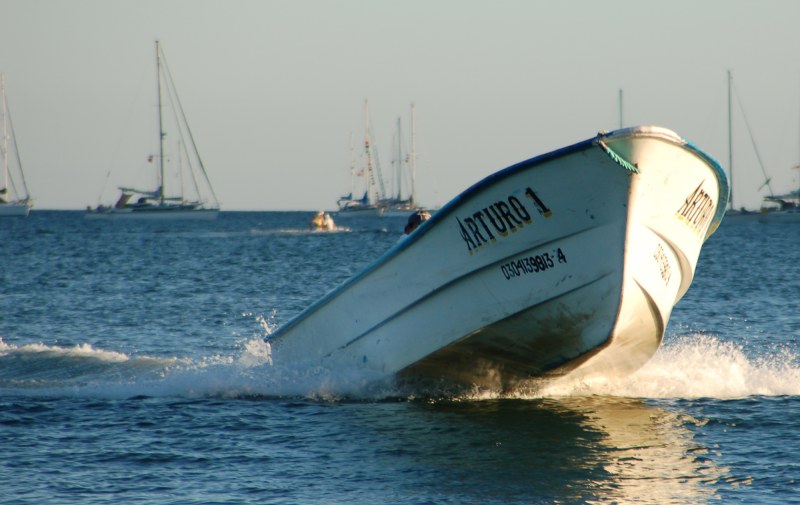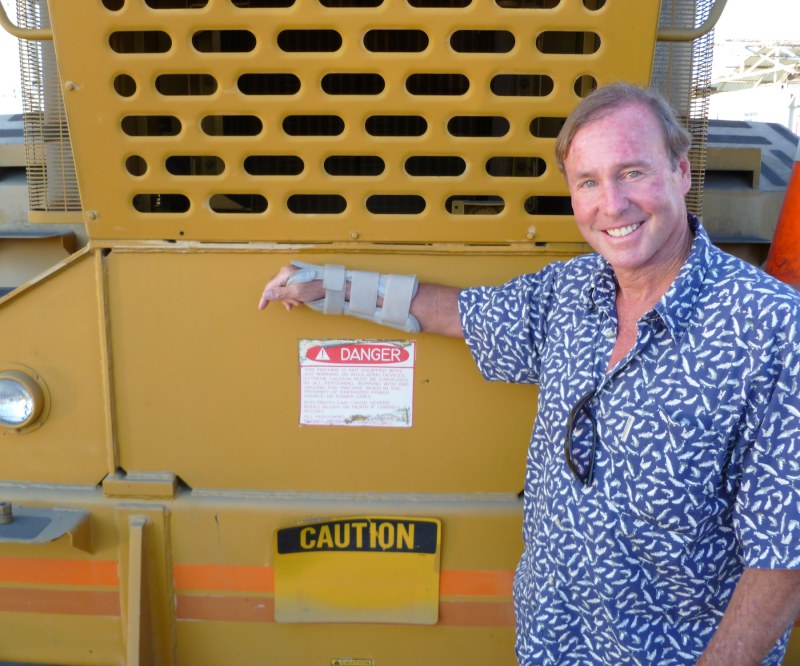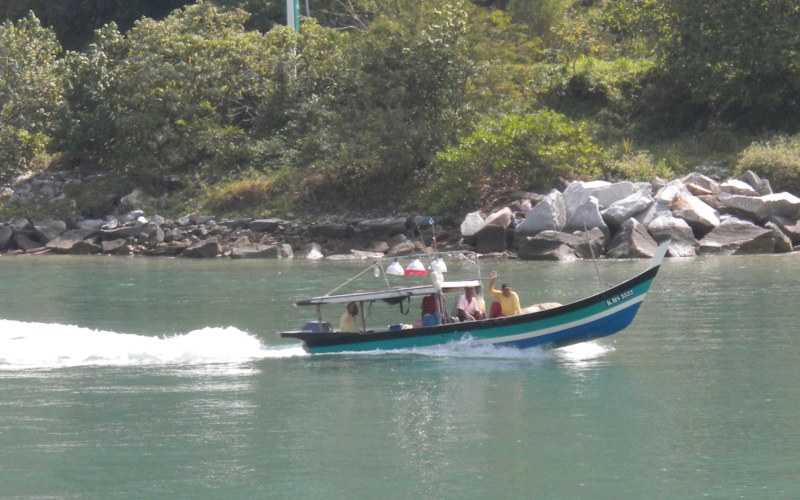
Solo Sailor Tells His Tale
In a follow-up to Wednesday’s report of a solo sailor being rescued 55 miles off Fort Bragg on Sunday, we spoke with the skipper of the Catalina 27 Amica, John Innes from Vancouver, B.C., about his experience in increasing gale-force conditions.
“I was under storm jib and had concerns about broaching,” Innes told us, “so I hove to and set a parachute anchor. I was doing well, but two or three hours later, a wave snuck through. It threw me up, down, and back down.” While Amica didn’t suffer a total knockdown, she was laid over pretty far.
“As water was breaking over the boat, I heard a not-nice noise,” he recalls. Innes climbed into the cockpit and realized that the bolt holding the rudder post to the tiller head had sheared off. Just as he had gathered his wits and was about to act, the rudder slipped away, leaving the tiller to dangle.
Innes had a tough decision to make — stay with the boat and risk injury (or worse), or call for help. Three days later he was still wondering if he did the right thing. With no way to steer the boat, and with conditions forecast to worsen over the following two days, he could have done little else.
You’ll find the rest of Innes’s story in the September issue of the magazine, but in the meantime, Innes — who was staying at a youth hostel in the City — says he’s not done with sailing. He’ll get another boat sooner or later. “It’s only a matter of time,” he said, his voice taking on a steely tone. “I’ve got a bone to pick with this ocean.”
The Danger of Dinghies
Before going cruising, most sailors put a lot of thought into safety. For example, what they will do to prevent getting hit by a ship, how they will pick up somebody who has fallen overboard, or how they will respond to water inexplicably coming into the hull. What most cruisers don’t think about is dinghy safety.

©2010 Latitude 38 Media, LLC
But they should. In the September issue of Latitude, coming out on September 1, we report on a number of people who have been injured or killed by other boats while in their dinghies. If you’re going cruising, you don’t want to end up like a sitting duck as they were.

© Latitude 38 Media, LLC
The most recent victim we have to report on is Giles Finlayson of the Encinitas-based Newport 41 Petrel. Late last year, while four years into a sailing/surfing safari, the singlehander was hit by a high speed fishing boat off the popular cruiser stop of Langkawi, Malyasia. His arms, which he put up to protect his head from the prop, were chopped up. He was left in the water for dead, his arms attached by little more than skin.

©2010 Latitude 38 Media, LLC
Miraculously, the 59-year-old Finlayson survived. Read about the incident, Finlayson’s determination to continue on around the world, and what you can do to prevent the same thing happening to you, in the upcoming Latitude. And no matter if you’re in a dinghy at Catalina or Cartagena, dinghy defensively.
